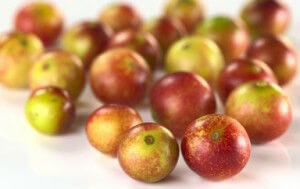
In order to live, we require vitamins. They regulate metabolism and assist the biochemical processes that release energy from food that has been digested.
They are known as micronutrients because they are required in smaller doses than nutrients such as fat, carbohydrates, proteins and water. Vitamins are coenzymes that work with enzymes to allow all of the processes and reactions to occur as they should in the body.
Some vitamins are soluble in water and others are soluble in oil. Water soluble vitamins cannot be stored in the body and must be replaced daily. Vitamin C and the B-complex are both water soluble. Oil soluble vitamins can be stored for longer periods of time in the fatty tissue and liver. Vitamins A, D, E and K are oil soluble. We require both types of vitamins for optimal health.
Vitamin C (Ascorbic Acid) is an antioxidant that is required for three hundred metabolic processes in the human body, including tissue growth and repair, adrenal gland function and healthy gums. Vitamin C also aids in the production of anti-stress hormones, and interferon – a vital immune system protein. It is needed to metabolize folic acid, tyrosine, and phenylalanine.
Vitamin C can reduce the symptoms of asthma, cancer and infection while boosting the immune system. It can combine with substances that are toxic and heavy metals, disarming them and escorting them out of the body (known as a chelating agent).
Because we cannot manufacture vitamin C, we must get it from our diet or in supplement form. Vitamin C is found in berries, citrus fruits and green vegetables. Some great sources of this vital vitamin include asparagus, avocados, beet greens, broccoli, cantaloupe, collards, grapefruit, kale, lemons, pineapple, radishes, watercress, sweet peppers and green peas. Many people drink orange juice because they feel it is high in vitamin C but that is only if it is fresh squeezed and not processed by pasteurization or heating.
Added sugar fruit drinks, although they may say “are a good source of vitamin C,” are not really. They are often loaded with added sugar and may be so processed that they are devoid of nutrients. Many herbs contain vitamin C such as alfalfa, burdock root, peppermint, plantain, raspberry leaf, clover, violet leaves, yarrow, chickweed and kelp.
No Other Fruit on Earth
No other fruit exists on earth that has a higher concentration of vitamin C than the camu berry. Oranges, favored for their vitamin C content have about 1000 ppm. Once in a while they may have up to 4,000 ppm, but this is rare in the commercial orange business of today. The camu berry has concentrations of 50,000 ppm or 2g of vitamin C per 100 g of fruit.
This means that the camu berry has 50 times more vitamin C than an orange in an ounce per ounce comparison. A teaspoon of camu berry powder delivers over 1000 percent of your recommended daily allotment of vitamin C.
What is A Camu Berry?
Camu camu or camu berry, grows in flooded areas in the Amazon rainforest in Brazil, Peru, Colombia and Venezuela where the fruit. and its leaves are used for medicine. The fruit is about the same size as a lemon but has an orange tint to it.
Dr. Gary Null, PhD., a nationally known nutritionist and researcher, says that camu berries strengthen the immune system, and help maintain healthy eyes, skin and gums.
Besides its astronomical amount of vitamin C, the camu berry has much more to offer.
Here is what our research uncovered:
- Camu Berries Contain Valine: Valine is an essential amino acid that our body cannot produce. It is vital to cognitive and nervous system function and protects against muscle deterioration.
- Camu Berries Contain Leucine: This is another essential amino acid important for the growth of muscle, bone and tissue and the recovery and production of growth hormones.
- Camu Berries Contain Serine: This powerful essential amino acid that breaks the bonds between proteins and polypeptides so our body can use them.
- Camu Berries Contain Potassium: The proper functioning of the heart and kidneys require potassium. Over 71 mg are found in every gram of fruit. Potassium can also help reduce spikes in blood sugar, regulate blood pressure and reduce stress by regulating cortisol and adrenaline.
- Camu Berries Contain Gallic Acid: Gallic acid is an antioxidant that has both antifungal and antiviral characteristics.
- Camu Berries Contain Ellagic Acid: This acid also has antioxidant properties and has received attention for its anti cancer effects. It also helps regulate blood sugar.
- Camu Berries Contain Flavonoids: Flavonoids are found in plants and are responsible for their amazing colors. Camu berries contain a number of potent flavonoids that seek out and destroy free radicals.
Camu Berries Can:
- Reduce inflammation
- Protect your brain
- Ease depression
- Ease migraines
- Improve circulation
 What’s more, camu-camu berries have antibacterial properties, and can be applied directly to the skin to guard against infection in case of a small cut or injury. Simply squeeze juice from the fresh berries, or sprinkle a bit of power from the flash-frozen form, onto the wound and let this berry work its magic.
What’s more, camu-camu berries have antibacterial properties, and can be applied directly to the skin to guard against infection in case of a small cut or injury. Simply squeeze juice from the fresh berries, or sprinkle a bit of power from the flash-frozen form, onto the wound and let this berry work its magic.
Where to Get It: Camu berries are available in juice, capsule, tablet or powder form most health food stores or online.
-The Alternative Daily
Sources:
http://valine.info/?p=health-benefits-of-valine
http://www.wholeworldbotanicals.com/herbal_camucamu

